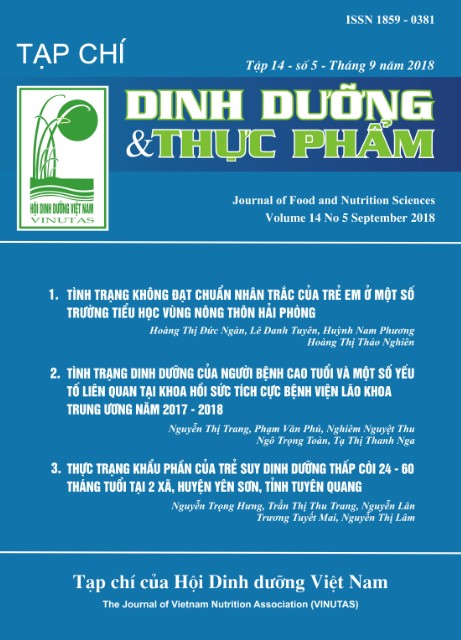ANTHROPOMETRIC FAILURE OF CHILDREN IN SOME PRIMARY SCHOOLS IN RURAL AREAS IN HAI PHONG CITY
Main Article Content
Abstract
While Vietnam has achieved significant reduction of malnutrition among children under
five years old, there is a limited data for malnutrition in primary school children. Objectives: This study was conducted 1) to determine the prevalence of malnutrition among
children aged 6-9 years old in some primary schools according to WHO and anthropometric growth failure criteria; 2) to determine the associations between some defined socioeconomic status and malnutrition among the children participated the study. Method:
Cross-sectional study was conducted to collect weight and height data in 2,334 children
in eight primary schools in rural areas in Hai Phong City and socio-economic status data
of the children’s family. The CIAF criteria were utilised to identify anthropometric failure
in the children. Results: The prevalence of underweight, stunting and wasting was 8.0%,
5.1% and 5.3%, respectively. The prevalence of anthropometric failure was 11.9%. Maternal education level was significantly associated with underweight (OR 3.63; p<0.05,
95%CI: 1.97, 6.69) and anthropometric failure (p<0.01). Conclusion: The prevalence of
anthropometric failure among children in 8 primary schools in rural areas in Hai Phong
City was high. Studies targeting improved anthropometry and stature of children should
take parental education level into account.
Keywords
Malnutrition, anthropometry, underweight, stunting, primary school children


